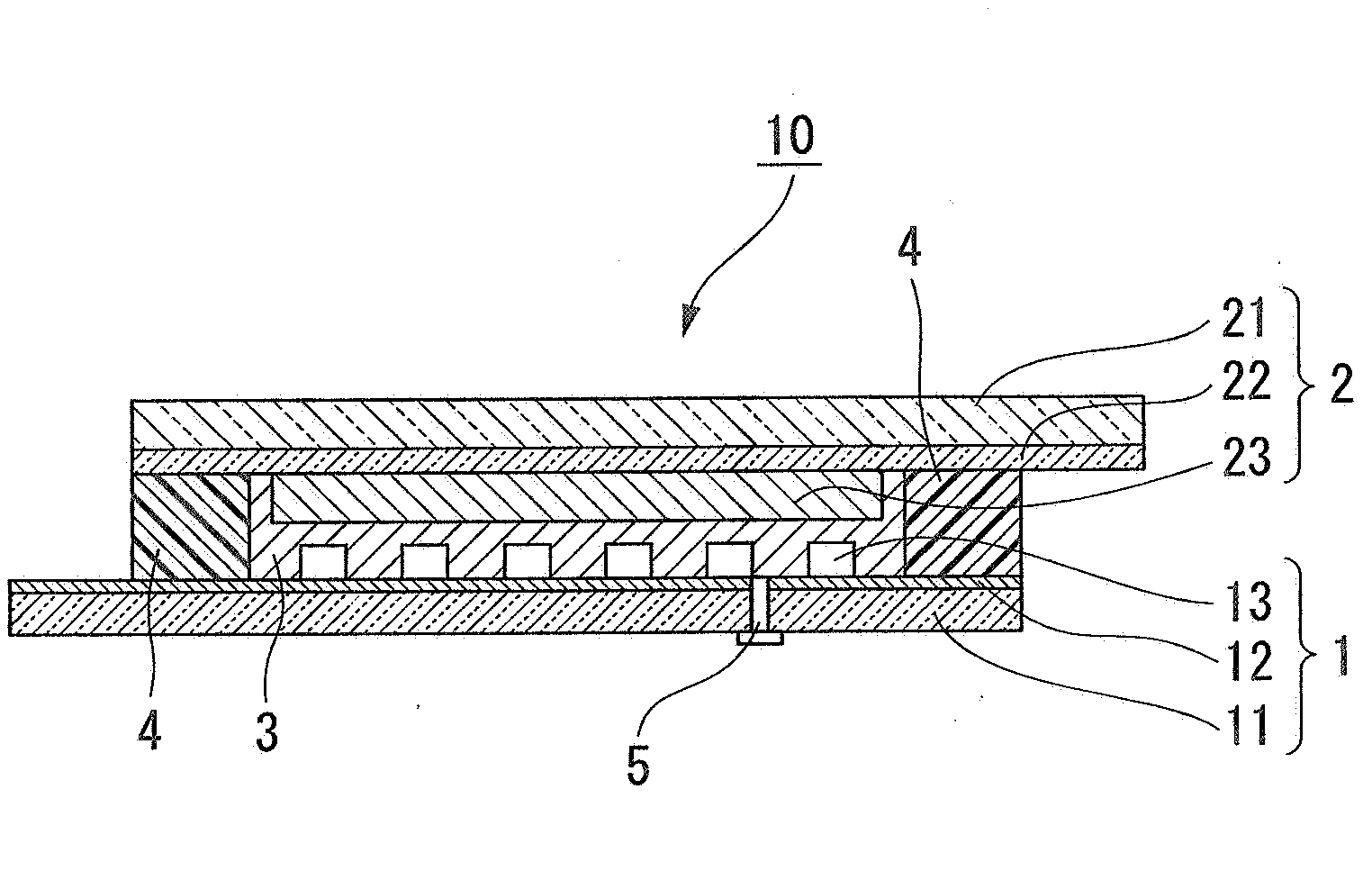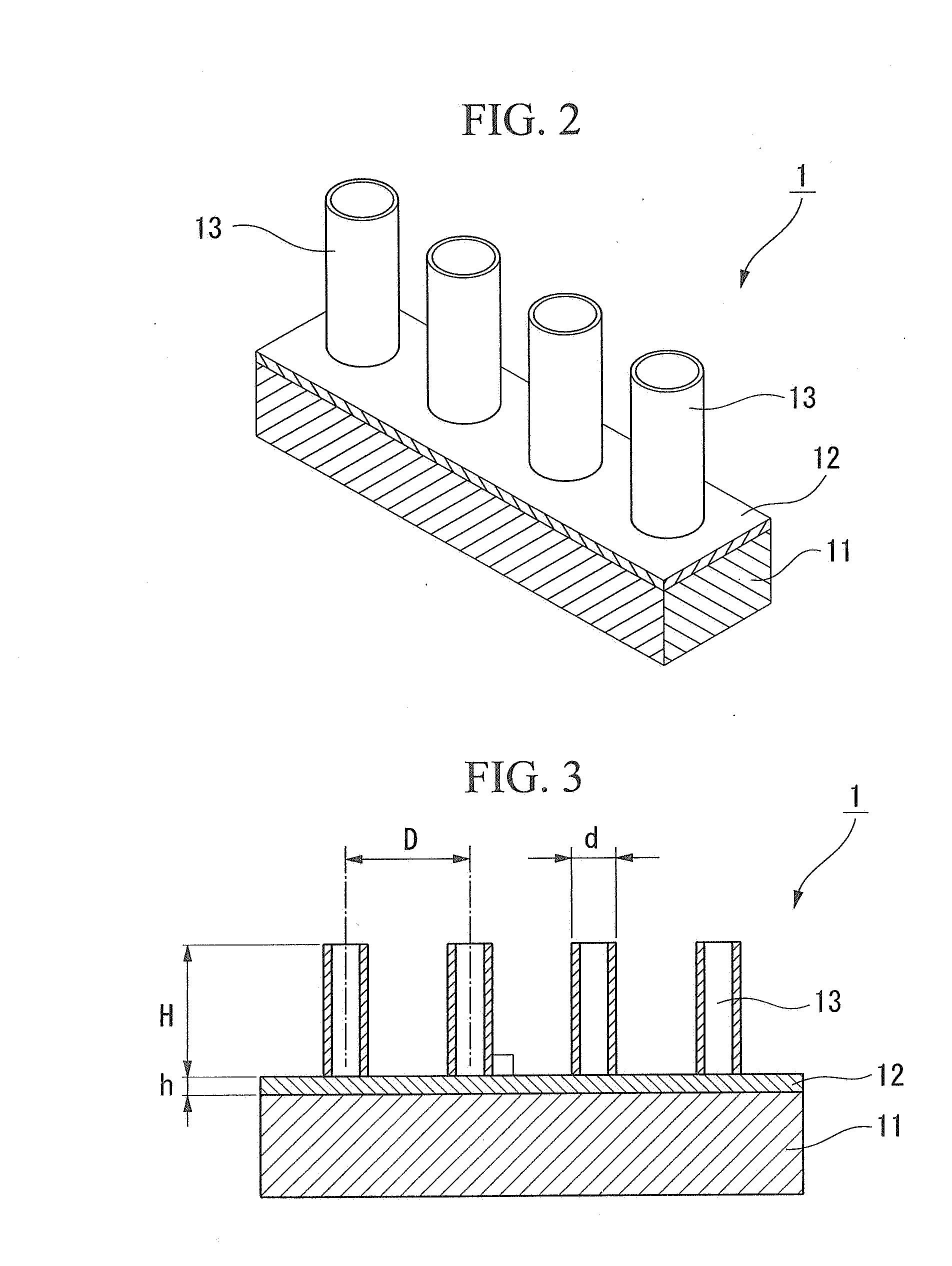Counter electrode for a photoelectric conversion element and photoelectric conversion element
- Summary
- Abstract
- Description
- Claims
- Application Information
AI Technical Summary
Benefits of technology
Problems solved by technology
Method used
Image
Examples
examples
[0068]Hereinafter, the present invention will be further specifically described with examples. However, the present invention is not limited to these examples.
examples 1 to 6
[0069]A photoelectric conversion element with a structure shown in FIG. 1 that has a counter electrode as in FIG. 2 and FIG. 3 was fabricated using the following materials.
[0070]As an electrolyte of Example 1, Example 3, and Example 4, an electrolyte solution made of an ionic liquid including iodine / iodide ion redox pairs (1-ethyl-3-imidazolium-bis(trifluoromethylsulfonyl)imide) was prepared.
[0071]As an electrolyte of Example 2, Example 5, and Example 6, a nanocomposite gel electrolyte that was made by mixing 10 wt % of oxide titanium nanoparticles with it, followed by centrifugal separation.
Window Electrode
[0072]A glass substrate with an FTO film was used as a transparent electrode substrate. On a surface of the FTO film side of the transparent electrode substrate, a slurry-like dispersion solution of oxide titanium with an average particle size of 20 nm was coated. After it was dried, the substrate was subjected to a heating treatment at a temperature of 450° C. for one...
PUM
 Login to View More
Login to View More Abstract
Description
Claims
Application Information
 Login to View More
Login to View More - R&D
- Intellectual Property
- Life Sciences
- Materials
- Tech Scout
- Unparalleled Data Quality
- Higher Quality Content
- 60% Fewer Hallucinations
Browse by: Latest US Patents, China's latest patents, Technical Efficacy Thesaurus, Application Domain, Technology Topic, Popular Technical Reports.
© 2025 PatSnap. All rights reserved.Legal|Privacy policy|Modern Slavery Act Transparency Statement|Sitemap|About US| Contact US: help@patsnap.com



